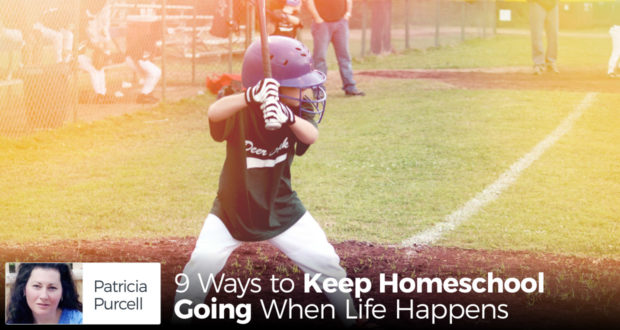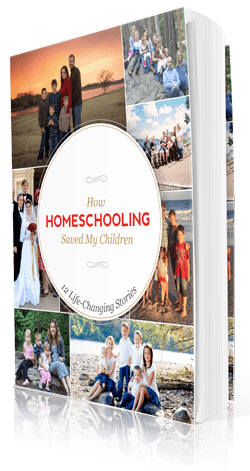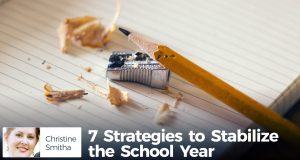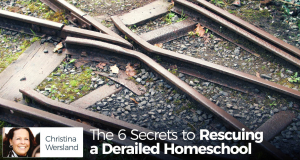Summary
Patricia Purcell homeschools her 3 kids, so she knows that life can frequently get in the way. Here are her 9 ways to keep going no matter what happens.One of the many great benefits of homeschooling is that it allows families the freedom to take advantage of some wonderful extracurricular activities.
The variety of available sports, lessons and clubs are so tempting that many families, like mine, must work hard to choose them with great discrimination in order to keep schoolwork as the top priority.
Even when limiting the number of activities, it can sometimes seem overwhelming to try to fit it all in. Usually, that’s a red flag to start pulling back on the activities and just focus on academics.
There are times when the disruption will be only temporary, such as when students are doing extra rehearsals for a play, or practicing more for a tournament. In such times, it can make sense to momentarily change the school routine and fit in the learning when and where you can.
For several years, my older two children were involved in a wonderful homeschool acting troupe. With careful planning, we were able to fit in the regular weekly rehearsals. Twice a year would be the performances.
These involved traveling to scattered locations across upstate New York, as well as extra rehearsals during the school week. In their downtime, my kids were so exhausted that regular lessons were hopeless. That was when I would adapt our routine to allow for some alternative learning.
Here are some ways that I did that.
1. Use Your Time Wisely
At the time that our family was involved in drama, my youngest was too young to participate. Since even the weekly drama class was 20 minutes from our house (and more in traffic), instead of going home the two of us would make the most of our time by multitasking. During the three and half hours that the class took, we would try to take care of all of our weekly errands, thereby giving ourselves more home-time during the rest of the week. Before setting out, I prepared by loading the car with:
- A cooler with cold packs, to store cold items from our grocery trip
- Library books to be returned
- Special shopping lists, for birthdays, clothing, etc.
- A bike or scooter for my son to ride at the park if the weather was good
- A snack
- If it was actually performance time, I would also pack lunches.
2. Create a Car Box
Then we would find a park or a library, or sometimes just sit in the car and use the time for learning. I created a car box for him, filled with items that were not part of his regular curriculum, but that were hands-on and engaging. I included such things as:
- Workbooks
- Pencils, crayons, scissors, glue, etc.
- Books (both easy readers and read alouds)
- Puzzles
- Children’s magazines
- Each week I tried to slip in something new to interest him. He benefited from the time alone with me, especially as I was free from the usual distractions of teaching multiple kids.
3. Listen to Audio Books
Sometimes we would have to travel several hours to the play venue. Rather than wasting that time, we used it to listen to quality audio books.
When possible, I would look for a book that involved the history of the region or the time period of the play that the kids were doing.
4. Find Local Attractions
Often our travels placed us in areas that were historically interesting or offered an attraction that was worth checking out.
I would check books and DVDs about the area out of the library for the kids to review, and we would try to plan a visit to a local attraction such as a museum or historic site.
Once, we even toured a private school which was, as you can imagine, a unique experience for homeschooled kids.
5. Use Technology
We found that bringing along a laptop or tablet was helpful. Even 10 minutes of practicing spelling words or math facts is better than nothing!
6. Focus on One Subject at a Time
Even during the busiest weeks, I learned to squeeze in the subjects that my kids needed the most practice in (for us it was usually math) so that when we got back to our regular routine, there was not a lot of tedious review to do.
7. Give Oral Quizzes
Not only did this help to fill up the time on a long drive, but the kids didn’t even complain after I pointed out the fact that by taking their spelling tests out loud, they didn’t have to write them out too.
8. Assign Some Research
With all of the interesting history and extra learning that the kids were doing, it often seemed to be a perfect opportunity to assign a little research.
If they were fascinated by a particular event or person that they had learned about, I would challenge them to come up with more facts about the subject.
Sometimes rather than a written report, we would just schedule a family discussion over dinner.
9. Resume Your Routine ASAP
As enjoyable as time away from the normal routine might be, it’s best to get back to the normal schedule as soon as possible.
Think about how hard it can be to resume schooling after a long summer break and you’ll know why I say this. Kids need to know that things are back to normal and school vacation is over.
So, the next time extra activities threaten to wreak havoc with your homeschooling routine, relax and realize you can manage it.
Make sure your children learn something during their time away from schoolwork, even if it’s not a part of your planned curriculum.
You might be surprised at what new interests begin as a result!
Share with me one of the most disruptive elements to your homeschool. What do you do about it?

 Seton Magazine Catholic Homeschool Articles, Advice & Resources
Seton Magazine Catholic Homeschool Articles, Advice & Resources














































